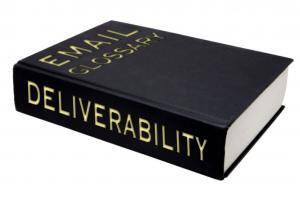Writing Skills
A memo (also known as a memorandum, or “reminder”) is used for internal communications regarding procedures or official business within an organization. Unlike an email, a memo is a message you send to a large group of employees, like your entire department or everyone at the company. You might need to write a memo to inform staff of upcoming events or broadcast internal changes. If you need to inform your employees of official internal business, we’ll show you how to write a memo to better communicate your message. But before we break it down, let’s talk about the many purposes of memos. Memorandums are shared to inform readers about new information and have applications for different communities and businesses. Communities can use memos to tell people within it about public safety guidelines, promote various events, raise awareness on subjects that affect their lives. Businesses can use memos to relay information
There’s a lot of material out there about writing a great headline. But what about writing a good introduction sentence? Compelling readers to read the article is an art form in itself. And if you don’t do it well, you’re missing out on potential subscribers, leads, and customers. In this post, we’ll share how to write powerful introductions that turn casual browsers into readers. Article introductions matter, and here’s how to make them count. 1. Keep it short. I’m a big fan of short sentences. I love them because people can understand them easily. There’s great value in short sentences that are readable, digestible, and punchy. Writers often get caught up in the pressure of a good intro that they deliver long, run-on sentences. The problem with these sentences is that it makes readers work hard, which isn’t a great incentive to keep reading. There is no definitive answer for
One of the most commonly used punctuation marks, an errant comma can be the difference between a complete sentence and a complete mess. In this post, we’ll explore seven comma rules that will keep your writing concise and coherent. Before we dive in, what is a comma anyway? You can think of a comma as a lighter version of a period. While a period ends a sentence full-stop, a comma is a smaller, softer pause. It can separate words, clauses, or ideas within one sentence. 1. Two complete sentences can only be connected with a comma when using a coordinating conjunction. A coordinating conjunction is a conjunction placed between words, phrases, clauses, or sentences of equal rank. English has seven main coordinating conjunctions — for, and, nor, but, or, yet, so — that can be used to weave together two complete sentences with a comma. You can use the mnemonic
A memo (also known as a memorandum, or “reminder”) is used for internal communications regarding procedures or official business within an organization. Unlike an email, a memo is a message you send to a large group of employees, like your entire department or everyone at the company. You might need to write a memo to inform staff of upcoming events, or broadcast internal changes. If you need to inform your employees of official internal business, here’s an easy-to-follow business memo template, as well as examples for further guidance. Business Memo Template MEMORANDUM TO: FROM: DATE: SUBJECT: I’m writing to inform you that [reason for writing memo]. As our company continues to grow … [evidence or reason to support your opening paragraph]. Please let me know if you have any questions. In the meantime, I’d appreciate your cooperation as [official business information] takes place. Header: In your header, you’ll want to…

![hubspot:-how-to-write-a-memo-[template-&-examples]](https://topdeliverability.com/wp-content/uploads/2023/08/24086-hubspot-how-to-write-a-memo-template-examples.webp-23keepProtocol)


![hubspot:-how-to-write-a-memo-[template-&-examples]](https://topdeliverability.com/wp-content/uploads/2021/11/9146-hubspot-how-to-write-a-memo-template-examples.jpeg-23keepProtocol)




